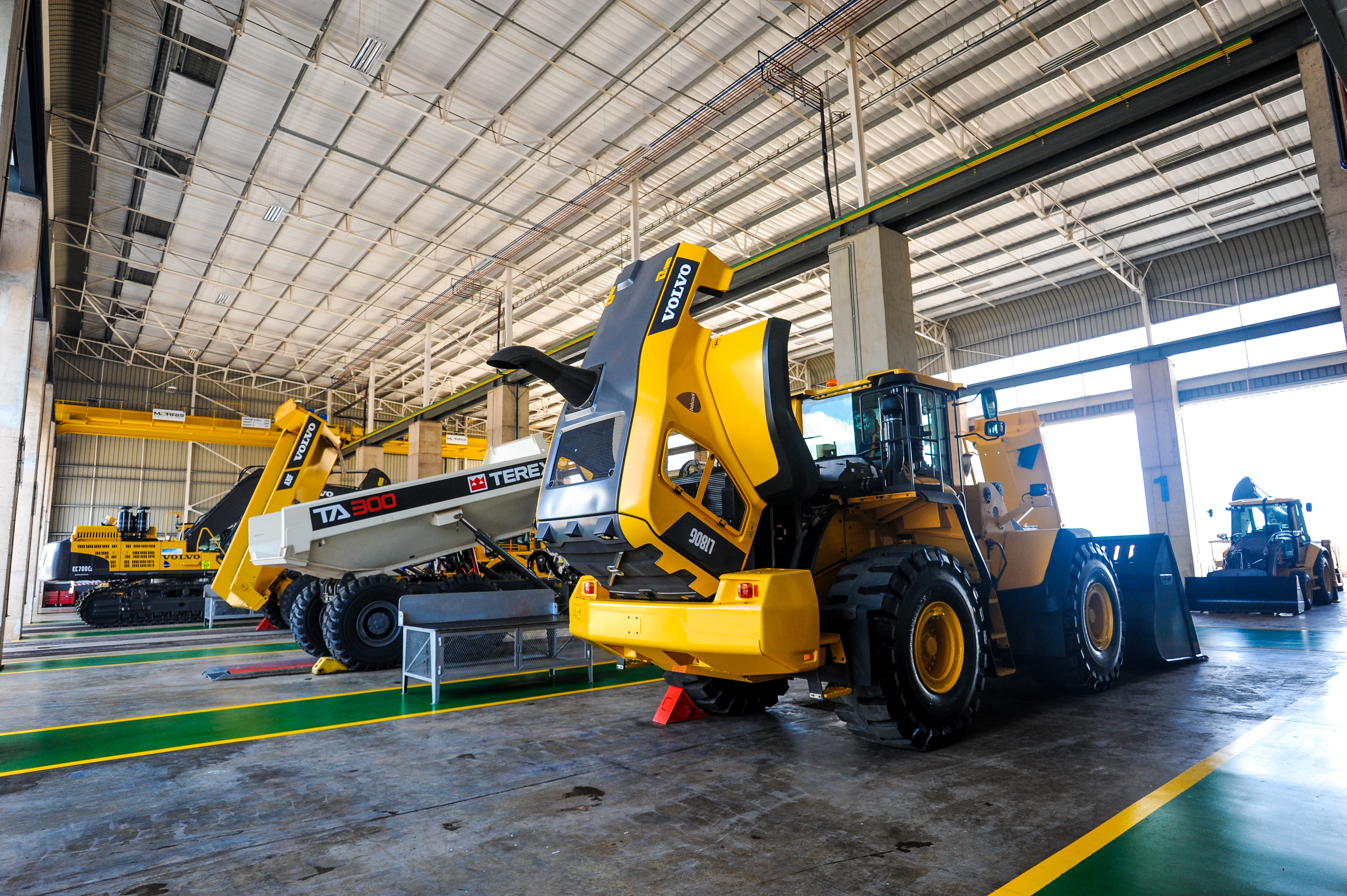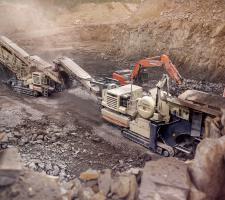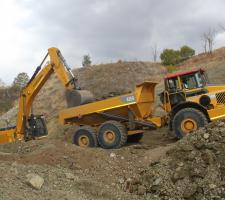
In recent years economic trends, as well as environmental factors, have led to a decline in African GDP growth. However, infrastructure spending remains resilient, maintaining aggregates demand and supply chain optimism. By Munesu Shoko.
On the back of a ferociously volatile global economy, the ‘Africa rising’ story has been under severe pressure for the past two years. The growth outlook in developed markets remains pedestrian, and the majority of emerging markets are also experiencing the full brunt of the slowdown.
Africa’s growth momentum has slackened, and according to Deloitte’s ‘Construction Trends Report’, growth in Sub-Saharan Africa fell to 3.5% in 2015, before going down to 1.4% in a difficult 2016. This is the first time the region’s growth has been lower than the global average since 2000, and it is significantly far off the 5-7% average experienced by the region over the past decade. The Deloitte report further notes that, of Sub-Saharan Africa’s major four economies – South Africa, Nigeria, Angola and Kenya – one is rapidly contracting (Nigeria) while two are static (Angola and South Africa). It is only Kenya which is bucking the downward trend and growing at a decent emerging market rate of close to 6%.
However, it is encouraging to note that the World Bank says growth in Sub-Saharan Africa is recovering, supported by modestly rising commodity prices, strengthening external demand and recovering drought conditions in a number of countries. Growth in the region is forecast to pick up to 2.6% in 2017 and to 3.2% in 2018, centred on moderately rising commodity prices and reforms to tackle macroeconomic imbalances. The World Bank projects growth in non-resource intensive countries to remain solid, buttressed by infrastructure investment, resilient services sectors and the recovery of agricultural production. For example, Ethiopia is forecast to expand by 8.3% in 2017, Tanzania by 7.2%, Ivory Coast by 6.8% and Senegal by 6.7%, all reinforced by public investment.
Despite slowing GDP growth in several of the African countries, investments in infrastructure development remain resilient, based on the understanding that infrastructure is an important enabler for GDP growth and a more diversified economic and private sector activity. African governments are fast understanding that infrastructure also serves to foster competition, innovation and productivity. Investment in infrastructure also tends to increase business confidence, and simultaneously lowers transaction costs by making it easier for businesses to move people, goods and services.
On the back of this infrastructure development drive, Deloitte says a total of 286 construction projects in Africa valued at US$50 million and above had broken ground by 1 June 2016. These have a collective value of US$324 billion. West Africa has the largest number with a total of 92 projects and also the most in terms of value at US$120 billlion.
North Africa has seen a significant jump in the number of large infrastructure projects with a total of 42, compared with the 29 recorded in the previous year, representing an increase of 44.8%. The value of projects rocketed by a whopping 195%, from US$25 billion in 2015 to US$76.1 billion in 2016, signifying an increase in confidence in a region that has seen a lot of security and political setbacks in recent years. The political situation in several countries such as Egypt and Algeria has stabilised. Libya is expected to average 3.6% GDP growth during the 2016-17 period.
With 43 projects valued at US$27.4 billion, East Africa – which includes Kenya, Burundi, Ethiopia, Eritrea, Rwanda, Seychelles, Somalia, Tanzania, Uganda and Djibouti – is home to 15% of megaprojects in Africa, representing 8.5% of the total value. Kenya remains a regional powerhouse, despite recent drought and a focus on elections, with 11 grand projects on the go, representing a total of 25.6% of the regional total. Ethiopia and Uganda closely follow with a total of nine projects each.
Central Africa – comprising Cameroon, Central Africa Republic, Chad, the Democratic Republic of Congo, Equatorial Guinea and Republic of the Congo –has a total of 24 megaprojects under way, representing 8.4% of all projects in Africa. The value of the projects is US$7 billion, which is 2.2% of the total value of projects on the continent. The downturn in commodity prices has had an adverse impact on Central Africa, given that all the countries in the region are largely dependent on resources.
With 85 projects, southern Africa – which includes Angola, Botswana, Lesotho, Madagascar, Malawi, Mauritius, Mozambique, Namibia, South Africa, Swaziland, Zambia and Zimbabwe – has 29.7% of all projects in Africa. With a total of US$93.4 billion, these projects represent 28.9% in value of all projects on the continent. South Africa remains the powerhouse of the region, accounting for 48.2% of the projects, followed by Angola with 12.9% despite the oil curse, and Mozambique and Zambia with 10.6% each.
The continued infrastructure development activity is having a knock-on effect on the aggregates industry, which, despite the changes in construction project sizes, is still fairly buoyant. Andries van Heerden, CEO of
Van Heerden says in South Africa, for example, government infrastructure projects such as road maintenance, water and sanitation projects, as well as low-cost housing, have been the biggest drivers of aggregates demand. Building activity in urban centres such as Sandton CBD and the fast-developing Waterfall area in Midrand, between Johannesburg and Pretoria, remains buoyant. As a result, South Africa remains a healthy aggregates market pushing between 80-90 million tonnes per year.
The supply chain is always a good measure of the health of the recipient sectors. Unlike in 2016, most equipment suppliers report improving business activity across Africa, despite the slow growth in a number of economies.
Sandro Scherf, CEO of
In terms of demand, Scherf says there is a relatively high demand for road stone at this stage. “The demand for manufactured sand remains very popular for hollow brick manufacturing although the volumes cannot be compared with road stones. However, the demand is steady and the ability to command good profits make this market worthwhile,” says Scherf.
Recent investments in footprint expansion and capacity building projects by several international original equipment manufacturers is also a key indicator of their confidence in the future of Africa, especially considering that the continent is still home to 30% of all global mining activities and a lot of infrastructure development still has to happen.
The new presence in Accra will provide FLSmidth with a hub for regional operations as there is already a large installed base, not just in Ghana, but in other neighbouring countries including Ivory Coast, Burkina Faso and Mali, as well as Guinea. “We are positioning for growth, not only for FLSmidth but for our customers in that area,” says de Kock.
Meanwhile, after five years of successfully growing its market in Botswana, mineral processing solutions provider Multotec has relaunched its presence in the country to become a fully-fledged subsidiary. “With our head office in Letlhakane and additional site offices at Jwaneng, Orapa and Letlhakane, Multotec’s success in this region has been built on staying close to our customers,” says Kris Vergote, GM for Multotec Botswana.
Elsewhere,
Meanwhile, the
“We see very interesting growth potential for Africa. We have enjoyed a lot of success in Botswana recently. We have also seen increased business activity in Ghana. Despite the reliance on oil, Nigeria is still one of the big markets for Kleemann,” says Krill. “Bearing in mind that the brand was only marketed in Europe prior to 2006 when it was eventually acquired by the Wirtgen Group, Kleemann now commands a sizeable 5% market share in Africa following its mere six-year presence in the local market,” adds Mike Newby, sales engineer – Mineral Technologies at Wirtgen SA.
Elsewhere, Barloworld Equipment recently announced an agreement with
Looking ahead, Van Heerden expects that infrastructure projects will remain drivers of demand for aggregates on the continent, sustaining the volumes at current levels. “If the political uncertainty is eliminated and investor confidence can be improved, we see very strong growth in demand,” he says.
For Scherf, the current outlook is negative with many projects hinging on political developments. “We, however, are confident that despite the negative outlook, we have the ability to ensure our customers’ profit margins improve by working closely with them and educating them about the benefits of Metso design technique and automation solutions,” he says.
Meanwhile,
“It is that view that allows Cummins to invest in the future success of its customers and its business. As a result, we have invested US$100 million+ in the last seven years on the continent. That is a key indicator of our optimism in the long-term potential of our business on the continent,” concludes Du Plooy.











